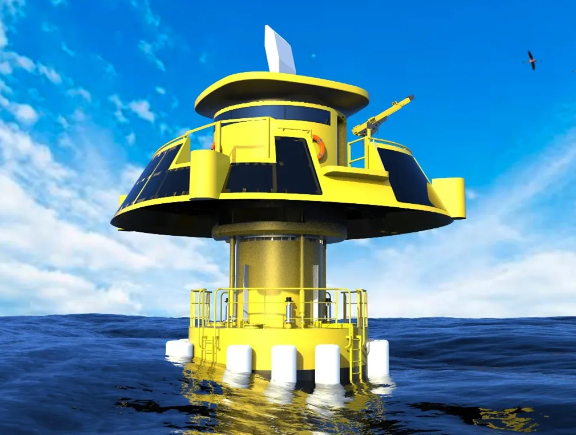The Hague-based company Robin Radar is offering a floating radar that prevents birds and bats from colliding with the turbine blades of offshore wind farms to wind farm developers all over the world in order to create eco-friendlier wind farms.

When large numbers of birds are approaching future wind farm Ecowende, located about 53 kilometres off the Dutch coast, wind turbines can be shut or slowed down automatically on demand for a while. To prevent bird mortality by collision, Robin Radar Systems was asked by the wind farm developer to supply an alert system, combining a radar, a camera, sensors and AI software that will eventually be deployed on this wind farm in the North Sea.
“During high peaks of bird migration they can shut down the turbine in real-time” said Sibylle Giraud, VP Wind, Environmental and Civil aviation practices at Robin Radar Systems. “These tools allow operators to find the right balance between maximising the energy production of the wind farm and at the same time minimising the risk of collision with birds or bats.”
More wind farms are being built than ever before. In the Dutch part of the North Sea alone, at the end of 2023 a total capacity of 4,7 Gigawatts offshore wind farms were operational.
“The exponential growth of wind farming in The Netherlands is huge” added Ms Giraud. “The amount of investments is unseen in Europe and worldwide. There is a high risk of collision. Many birds migrate at night, have no visibility and fly at the level of the turbines. That’s when collisions can happen, also with protected species.”
According to Ms Giraud’s company there is an urgent need to mitigate the impact of wind farms on birds and bats and avoid death by collision. That includes monitoring and shutdowns if birds or bats are approaching the turbine blades.
Measuring how many birds and bats collide with turbine blades is difficult. Several studies – mostly held at onshore wind farms in the US – estimate between 140,000 and 679,000 birds die because of wind turbine collisions each year. In other studies estimates range from 4 to 18 birds killed per turbine per year. A study by the International Union for Conservation of Nature (IUCN) concluded that most estimates of seabird collision so far are based on theory rather than empirical evidence, because of the difficulties of monitoring and carcass collection offshore. On bat mortality, there are almost no reliable data, but it’s clear wind farms also pose a danger to migrating bats.
To prevent and avoid bird mortality, radar assisted shutdown has proven to be very effective, studies in Portugal showed. Almost no birds died during five consecutive autumns and shutdown periods ranged from 0.2 to 1.2 percent of a year’s wind farm activity. IUCN states that a combination of cameras and radar systems detection, paired with automated analysis of the images by AI, and followed by shutdowns, can be effective in reducing bird and bat mortality at offshore wind farms. That is exactly what Robin Radar Systems and its partners MIDO and DHI are aiming for.
The three companies are combining their advanced detection systems and data collection. That includes Robin Radar’s MAX bird and bat radar systems, Danish company DHI’s camera’s, sensor integration and artificial intelligence (AI) species recognition solution MUSE, and Spanish company MIDO’s floating platform FLORA 1, a wave energy convertor generating all the power the systems needs. The technologies will be deployed at Dutch offshore wind farm Ecowende, based in Rijswijk, and according to Ecowende the most ecological wind farm yet.
The floating platform with the bird and bat monitoring system will be operational at the end of this year. From then on it will be collecting and providing data 24/7 and monitoring all birds across the wind farm. It will be the first floating system with such a radar in the world.
Source : https://www.renewableenergymagazine.com/










0 nhận xét:
Đăng nhận xét